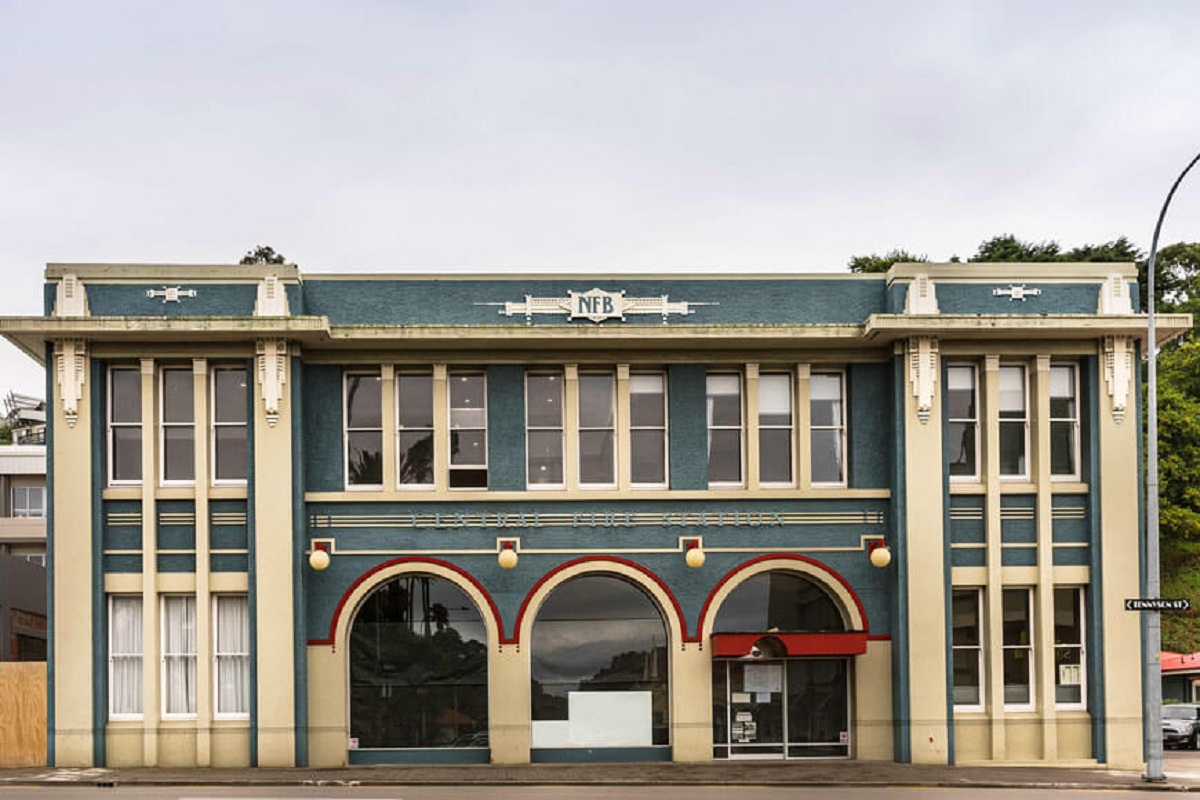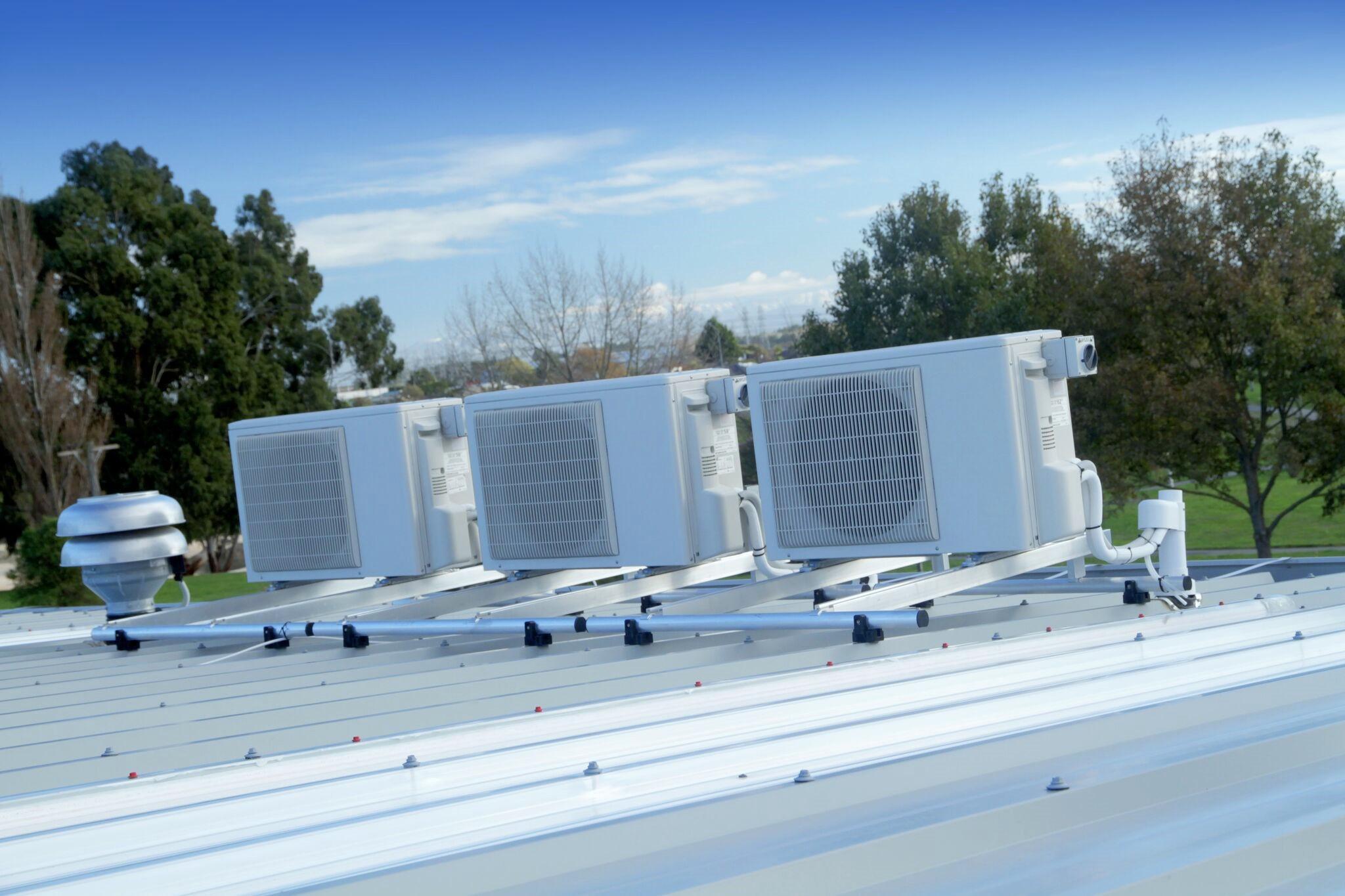Home>diy>Architecture & Design>Where Is The Façade Located


Architecture & Design
Where Is The Façade Located
Modified: October 20, 2024
Discover the captivating architecture and design of the Façade, a hidden gem located in [location]. Immerse yourself in the stunning blend of modern and traditional elements.
(Many of the links in this article redirect to a specific reviewed product. Your purchase of these products through affiliate links helps to generate commission for Storables.com, at no extra cost. Learn more)
Introduction
The façade of a building is much more than just an outer shell. It serves as the face of a structure, the first impression it makes on anyone who encounters it. From ancient temples to modern skyscrapers, the design of the façade has always been a crucial element in architecture. It not only impacts the aesthetic appeal of a building but also plays a significant role in functional aspects such as energy efficiency, ventilation, and structural integrity.
Defined as the exterior walls of a building, the façade encompasses a range of architectural elements, including windows, doors, cladding materials, and decorative features. It is a reflection of the architectural style, cultural influences, and prevailing trends of the time when a structure was built. Furthermore, the location of the façade on a building can greatly affect its overall design and interaction with the surrounding environment.
Throughout history, the façade has been an integral part of architectural design, often bearing significant historical and cultural symbolism. From the grand cathedrals of Europe to the intricate palaces of the Far East, the façades of these iconic structures have become iconic themselves.
In modern architecture, the role of the façade has evolved to encompass innovative designs that merge aesthetic appeal with environmental sustainability. As cities become more densely populated, new challenges arise in terms of energy consumption, natural light, and the overall visual impact of buildings. Architects now focus on creating façades that not only express the identity of a structure but also contribute to its energy efficiency and sustainability goals.
In this article, we will explore the importance of façades in architecture and delve into the historical significance of these external building elements. We will also examine the different types of façades, the factors influencing their location, and their role in urban planning. Finally, we will look at some famous buildings and landmarks that are renowned for their unique and striking façades, as well as the current trends in façade design.
Key Takeaways:
- Façades are more than just outer shells; they are the face of a building, reflecting its identity, historical significance, and cultural influences while also contributing to its energy efficiency and sustainability goals.
- The location of a façade on a building is influenced by factors such as natural light, views, privacy, climate, and architectural expression, playing a crucial role in creating visually appealing, functional, and sustainable structures within urban environments.
Definition of Façade
At its core, a façade refers to the exterior face or frontage of a building. It is the portion of the structure that is directly visible and accessible to the public eye. The term “façade” comes from the French word meaning “face,” and it accurately represents the purpose of this architectural element.
A façade includes all the elements that make up the external appearance of a building, such as walls, windows, doors, balconies, and decorative features. It serves as a protective barrier, shielding the internal spaces from weather conditions, while also allowing for visual interaction between the building and its surroundings.
Aside from its functional aspects, a façade also plays a crucial role in creating the first impression of a building. It is often the most noticeable and memorable part of a structure, setting the tone for the overall architectural style and character. The design choices for the façade can convey a range of messages, from statements of grandeur and luxury to representations of simplicity and minimalism.
Moreover, the façade acts as a canvas for artistic expression. Architects have utilized creative techniques and materials throughout history to craft intricate designs and patterns on the exterior walls of buildings. From ancient carvings and ornate ornamentation to modern-day glass and steel constructions, the façade showcases the artistic and technical skills of architects.
In summary, the façade of a building encompasses the outermost layer, presenting the face of the structure to the world. It combines both functional and aesthetic elements, along with the potential for artistic expression. The design choices for the façade greatly impact the overall architecture and character of a building, making it a fundamental aspect of architectural design and urban planning.
Importance of Façade in Architecture
The façade of a building holds immense importance in architecture and plays a pivotal role in shaping the overall design and impact of a structure. Here are some key reasons why the façade is significant in architectural design:
- Aesthetic Appeal: The façade is the first thing that people see when they encounter a building. It is the external face of a structure and sets the tone for its visual impact. A well-designed façade can enhance the aesthetic appeal of a building, making it visually pleasing and memorable.
- Identity and Branding: The façade is often used to reflect the identity and branding of a building or institution. It can incorporate design elements that convey the purpose and values of the organization it represents. For example, corporate buildings may feature sleek and modern façades to project an image of professionalism and innovation.
- Historical and Cultural Significance: Many iconic buildings around the world are renowned for their historical and cultural significance, as reflected in their façades. The architectural styles, decorative elements, and materials used in the façade can provide insight into the time period and cultural influences of a structure. They serve as a visual representation of history and heritage.
- Functional Aspects: While the façade is primarily associated with visual appeal, it also serves practical purposes. It acts as a protective barrier, shielding the interior spaces from weather conditions such as rain, wind, and harsh sunlight. Additionally, the design of the façade can contribute to the energy efficiency and sustainability of a building by optimizing natural light and ventilation.
- Positive User Experience: A well-designed façade can enhance the overall user experience of a building. It creates a sense of arrival and anticipation, drawing people in and inviting them to explore the interior spaces. A thoughtfully designed façade can also create a connection with the surrounding environment, integrating the building into its context and fostering a harmonious relationship with the surroundings.
Overall, the façade holds immense importance in architecture. It is not merely an outer shell or a decorative element but a vital component that contributes to the overall aesthetics, functionality, identity, and user experience of a building. Architects carefully consider and design the façade to create a lasting impression and to ensure it aligns with the goals and vision of the structure they are creating.
Historical Significance of Façades
Throughout history, façades have held immense historical and cultural significance. They often serve as a reflection of the architectural styles, societal values, and cultural influences prevalent at the time a structure was built. Here are some examples of the historical significance of façades:
- Ancient Civilizations: The ancient civilizations of Egypt, Greece, and Rome all left behind remarkable architectural structures with intricate façades. The façades of the Egyptian temples, for instance, featured massive stone columns and towering gateways adorned with hieroglyphs and intricate carvings, showcasing the grandeur and divine nature of their deities.
- Medieval Europe: During the medieval period, the façades of European cathedrals and castles became a canvas for intricate stone carvings and stained glass windows. The Gothic architecture, characterized by pointed arches and ribbed vaults, gave rise to stunning façades that conveyed a sense of spiritual devotion and awe-inspiring beauty. These façades often depicted biblical stories and saints.
- Renaissance and Baroque Eras: The Renaissance and Baroque periods marked an era of elaborate façade designs. In Italy, the Renaissance architects focused on harmonious proportions and classical elements, while in France, the Baroque architects created ornate façades with decorative sculptures and elaborate detailing. The façades of buildings such as the Palace of Versailles and Florence Cathedral are timeless examples of this era.
- Art Nouveau and Art Deco Movements: In the late 19th and early 20th centuries, the Art Nouveau and Art Deco movements introduced new design styles to façades. Art Nouveau embraced flowing lines, organic shapes, and intricate ornamentation, as seen in the façades of buildings like Casa Batlló in Barcelona. Art Deco, on the other hand, emphasized geometric shapes, sleek lines, and bold decorative motifs, with iconic façades seen in many skyscrapers of the era like the Chrysler Building in New York City.
- Modern and Post-Modern Architecture: In the 20th century, modern and post-modern architects began to experiment with façade designs. Modernists focused on functionalism and simplicity, with minimalistic façades that showcased clean lines and large windows, as exemplified by the Bauhaus movement. Post-modernism brought back historical references and eclectic designs, with façades combining different styles and materials, as seen in the works of architects like Frank Gehry.
The historical significance of façades goes beyond mere aesthetics. They are a testament to the evolution of architectural styles, the influence of cultural and societal trends, and the craftsmanship and ingenuity of architects throughout the ages. By studying and appreciating these façades, we gain insight into the history and cultural richness of different civilizations.
Different Types of Façades
The world of architecture encompasses a wide range of façade designs, each with its unique characteristics and aesthetic appeal. Here are some of the different types of façades commonly found in architectural design:
- Classic or Traditional Façade: This type of façade is inspired by historical architectural styles and often features symmetrical designs, decorative moldings, and ornate detailing. Classic facades can be found in buildings such as neoclassical mansions, Georgian-style homes, and traditional government buildings.
- Modernist Façade: Modernist façades are characterized by clean lines, simplicity, and an emphasis on functionality. They often feature large windows, minimalistic design elements, and a focus on geometric shapes. Famous modernist buildings include the Farnsworth House designed by Mies van der Rohe and the Bauhaus-inspired buildings of the 20th century.
- Glass Façade: Glass façades are a popular choice in contemporary architecture, providing transparency, natural light, and a sense of openness. They can be seen in commercial buildings, high-rise towers, and contemporary residential structures. Glass façades can range from fully transparent to highly reflective or even incorporate patterned or colored glass.
- Brick Façade: Brick façades are versatile and timeless, offering a warm and textured aesthetic. They can be found in various architectural styles, from rustic cottages to industrial buildings. Brick façades can be laid in different patterns, offering opportunities for creative designs.
- Panelized Façade: Panelized façades consist of pre-fabricated panels that are installed onto a building’s exterior. These panels can be made from a variety of materials such as metal, wood, or composite materials. Panelized façades allow for efficient construction and offer flexibility in terms of design and customization.
- Green Façade: Green façades incorporate living plants and vegetation on the exterior walls of a building. These vertical gardens provide numerous benefits, including energy efficiency, improved air quality, and aesthetic appeal. Green façades can range from simple trellis systems with climbing plants to sophisticated hydroponic systems.
These are just a few examples of the myriad façade designs available in architectural practice. Architects often combine different façade types or create innovative designs that push the boundaries of traditional concepts. The choice of façade depends on several factors, including the building’s purpose, architectural style, environmental considerations, and desired aesthetic expression.
By understanding the different types of façades, we can appreciate the diversity and creativity within architectural design. Each type of façade offers its own unique charm and contributes to the overall character and visual impact of a building.
The façade of a building is typically located at the front entrance, facing the street or main approach. It is the exterior face of the building and often features decorative elements or architectural details.
Factors Influencing the Location of Façades
The location of a façade on a building is a crucial decision that architects make during the design process. It not only affects the overall aesthetic and visual impact of the structure but also considers practical considerations and functionality. Here are some key factors that influence the location of façades:
- Sun and Natural Light: The orientation of a building and the location of its façade are influenced by the path of the sun. Architects often position the primary façade to capture natural light and maximize daylighting within the interior spaces. By strategically placing windows and openings, they create well-lit and inviting spaces that minimize the need for artificial lighting during the day.
- Views and Surroundings: The location of a façade is also influenced by the desired views and interaction with the surrounding environment. Architects consider the orientation of a building to capitalize on panoramic vistas, focal points, or landmarks. By carefully selecting the location of façades, architects can frame beautiful views or create visual connections with important elements in the surroundings.
- Privacy and Security: In some cases, the location of façades is determined by privacy and security concerns. For example, in urban settings or buildings with dense populations, architects may position the primary façade away from busy streets or neighboring structures to create a more secluded and secure environment within the building.
- Climate and Weather Conditions: The location of façades is influenced by climate and weather considerations. In regions with extreme temperatures, architects may position the primary façade to provide shade during hot summers or maximize solar gain during colder months. Considerations such as prevailing winds, rain exposure, and proximity to bodies of water also contribute to the location of façades and the selection of appropriate materials.
- Functional Requirements: The location of a façade is dependent on the functional requirements of the building. For example, in commercial or retail buildings, the façade may be strategically positioned to attract attention, provide easily accessible entrances, or display signage. In residential buildings, architects may consider factors such as privacy, access to natural ventilation, and the relationship between indoor and outdoor living spaces.
- Architectural Expression: The location of façades also plays a role in expressing the architectural style and concept of the building. In some cases, architects may place a prominent façade to create a strong statement or focal point. They may also utilize contrasting façade materials or textures to accentuate specific features or to create a harmonious relationship with surrounding structures.
These factors, among others, guide architects in determining the location of façades on a building. It is a careful balance between functionality, aesthetics, and the interaction with the surrounding environment. By considering these factors, architects can create structures that not only fulfill their intended purposes but also harmonize with their context and embody the vision and design goals of the project.
The Role of Façades in Urban Planning
Façades play a crucial role in urban planning as they contribute to the overall character, livability, and functionality of cities and communities. Here are significant ways in which façades are essential in urban planning:
- Sense of Place: Façades define and contribute to the unique identity and sense of place within a city. They reflect the architectural style and cultural influences of a particular area, helping to create a distinct character. Well-designed and visually appealing façades can enhance the appeal of a neighborhood or district, attracting residents, visitors, and businesses.
- Street Engagement: Façades significantly impact the street-level experience in urban areas. By considering the design of ground-level façades, architects and urban planners can create active, vibrant streetscapes. Incorporating features such as storefronts, cafes, and public art can promote pedestrian activity, encourage social interactions, and foster a lively street environment.
- Urban Design Cohesion: Façades play a vital role in maintaining visual cohesion and harmony within urban areas. Through thoughtful design principles, such as consistent building heights, materials, and architectural styles, façades contribute to a cohesive streetscape. This cohesive design approach creates a sense of harmony and visual appeal that improves the overall urban experience.
- Historic Preservation: Preserving historic façades is an essential aspect of urban planning as it conserves the architectural heritage and cultural significance of a city. Historic façades contribute to the unique character and charm of older neighborhoods and can be incorporated into new developments. By integrating these façades into urban planning, cities can maintain a sense of history while still experiencing growth and development.
- Sustainability and Energy Efficiency: Façades play a role in sustainable urban planning by contributing to energy efficiency goals. Through the use of proper insulation, solar shading devices, and sustainable materials, façades can help reduce energy consumption and environmental impact. Optimizing the orientation of façades to maximize natural daylight and ventilation can also improve the livability and sustainability of buildings and neighborhoods.
- Iconic Landmarks: Façades of iconic landmarks become symbols of a city or region. They can attract tourists, boost the local economy, and contribute to the pride and identity of a place. These landmark façades often become recognizable and iconic representations of the city, serving as visual focal points and landmarks in urban planning and wayfinding.
Urban planners and architects work together to ensure that façades are thoughtfully integrated into the fabric of a city, creating visually appealing and functional spaces for residents and visitors alike. By considering the role of façades in urban planning, cities can create attractive, sustainable, and vibrant environments that reflect their unique character and enhance the quality of life for all.
Façades in Famous Buildings and Landmarks
Famous buildings and landmarks around the world are often renowned for their striking and iconic façades. These façades serve as visual representations of architectural brilliance, cultural significance, and historical heritage. Here are some notable examples of façades in famous buildings and landmarks:
- Taj Mahal, India: The Taj Mahal is a masterpiece of Mughal architecture, known for its symmetrical façade adorned with exquisite white marble inlay work. The façade features intricate carvings, delicate geometric patterns, and calligraphy that pays homage to Persian and Islamic architectural influences.
- Sydney Opera House, Australia: The Sydney Opera House is an architectural icon with a roof that resembles sails. Its unique façade showcases a series of white concrete shells that form a harmonious composition. The glazed ceramic tiles on the shells reflect the changing hues of the sky and water, creating a dynamic and visually stunning effect.
- Guggenheim Museum, Bilbao: The Guggenheim Museum in Bilbao, Spain, is renowned for its striking titanium-clad façade designed by architect Frank Gehry. The façade curves and undulates, creating a sense of movement and fluidity. The reflective surface of the titanium panels interacts with light, blending the building into its surroundings and constantly changing its appearance.
- Empire State Building, New York City: The Art Deco-style façade of the Empire State Building is an iconic symbol of the New York City skyline. The limestone and granite exterior features setbacks, soaring vertical lines, and decorative detailing, culminating in a distinctive spire. The façade gives the building its classic elegance and timeless appeal.
- St. Basil’s Cathedral, Russia: The vibrant and colorful onion domes of St. Basil’s Cathedral in Moscow make its façade instantly recognizable. The cathedral’s façade is adorned with intricate patterns, vibrant hues, and decorative elements that represent the unique blend of Russian and Byzantine architectural styles.
- Sagrada Familia, Spain: The Sagrada Familia in Barcelona is known for its extraordinary façades that are still under construction. Designed by Antoni Gaudí, the façades of the basilica feature intricate sculptural details, unique organic forms, and soaring spires. Each façade tells a different story from the Bible, creating a visual narrative that is awe-inspiring and distinctive.
These examples represent just a fraction of the famous buildings and landmarks with captivating façades around the world. Each façade tells a story, captures the essence of the architectural style, and contributes to the cultural and historical significance of the structure. They inspire awe and admiration, drawing visitors to witness the beauty and splendor of these remarkable works of architecture.
Modern Trends in Façade Design
Façade design is continuously evolving, driven by technological advancements, sustainability goals, and changing architectural trends. Modern trends in façade design reflect a blending of aesthetics and functionality, incorporating innovative materials and techniques. Here are some notable modern trends in façade design:
- Green Façades: With a growing focus on sustainability, green façades have become increasingly popular. These façades incorporate living plants and vegetation, providing numerous benefits such as improved air quality, energy efficiency, and aesthetic appeal. Green walls can range from simple trellis systems to intricate vertical gardens implemented with advanced irrigation and planting techniques.
- High-Performance Glazing Systems: Energy efficiency is a significant factor in façade design. High-performance glazing systems, including double or triple glazing, low-emissivity coatings, and insulated glass, help minimize heat transfer and boost energy efficiency. These systems allow for ample natural light penetration while reducing heat gain or loss, contributing to sustainability and occupant comfort.
- Parametric Design: Parametric design involves the use of computational tools and algorithms to generate complex geometric patterns and forms. This design approach allows for the creation of dynamic façades with intricate patterns, varying textures, and customized designs. Parametric design enables architects to optimize performance through the precise control of daylight, solar radiation, and views.
- Smart Façades: The integration of smart technologies is revolutionizing façade design. Smart façades can dynamically respond to changing environmental conditions, utilizing sensors, actuators, and automation systems. These façades can self-adjust to optimize natural lighting, ventilation, and thermal comfort, enhancing energy efficiency and occupant well-being.
- Adaptive Façades: Adaptive façades incorporate movable or dynamic elements that respond to external factors. These elements, such as louvers, shades, or operable panels, can be adjusted to regulate solar heat gain, optimize daylighting, or provide privacy. Adaptive façades offer flexibility in terms of environmental control and user preferences.
- Textured and Patterned Facades: Contemporary façade designs often explore experimentation with textures and patterns. Through the use of materials such as concrete, metal panels, or specialized cladding systems, architects create visually dynamic façades with intricate patterns, perforations, and relief work. These façades add depth, visual interest, and a sense of uniqueness to the building.
These modern trends in façade design demonstrate the fusion of innovation, sustainability, and aesthetics. Architects are embracing new materials, technologies, and design approaches to create façades that not only enhance the visual appeal of buildings but also respond to environmental challenges and user needs. By incorporating these trends, façade design continues to evolve, pushing the boundaries of architectural expression and sustainable performance.
Conclusion
Façades have a significant impact on architecture, urban planning, and the overall visual appeal of buildings. They are not only the outer shell of a structure but also the face that represents its identity, character, and purpose. Throughout history, façades have played a crucial role in reflecting cultural influences, historical significance, and architectural styles.
The importance of façades in architecture cannot be overstated. They contribute to the aesthetic appeal of a building, create a sense of place, and leave a lasting impression on anyone who encounters them. Façades are also functional, providing protection from the elements, optimizing natural light and ventilation, and contributing to energy efficiency.
When it comes to urban planning, façades play a vital role in creating vibrant streetscapes, defining the character of neighborhoods, and shaping the overall visual harmony of cities. By carefully considering the location, design, and materials of façades, architects and urban planners can create environments that are visually appealing, sustainable, and representative of the unique cultural identity of a place.
Modern trends in façade design further showcase the dynamic nature of architecture. From green façades to smart systems, architects are incorporating innovative materials, technologies, and design approaches to push the boundaries of what façades can achieve. Sustainability, energy efficiency, and user comfort are consistently prioritized in these trends, leading to buildings that are not only visually stunning but also environmentally responsible.
In conclusion, façades are a critical element in the world of architecture, with immense historical, cultural, and functional significance. They embody the artistry, creativity, and technical skills of architects, while also fulfilling practical purposes. As architecture continues to evolve, façade design will remain integral, shaping the way we experience and interact with the buildings and cities around us.
Frequently Asked Questions about Where Is The Façade Located
Was this page helpful?
At Storables.com, we guarantee accurate and reliable information. Our content, validated by Expert Board Contributors, is crafted following stringent Editorial Policies. We're committed to providing you with well-researched, expert-backed insights for all your informational needs.














0 thoughts on “Where Is The Façade Located”